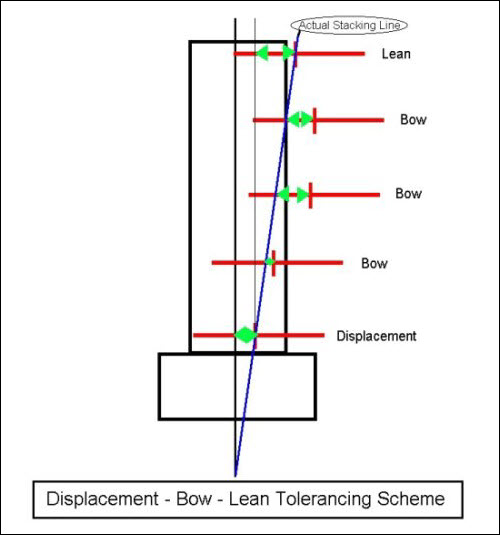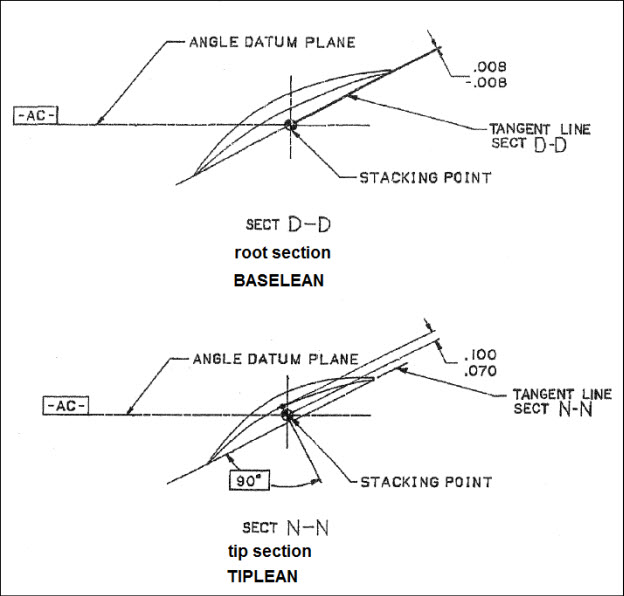
This parameter is a type of displacement where the deviation is calculated from the actual stacking line.
The bow plane (as specified by the bow angle, bow x, and bow y parameters in the Tolerance file) is intersected with the CONCAVE or CONVEX (methods) side of the airfoil. This point is the reference point for the true position calculation.
BOWT is Bow expressed as a true position value. Previously, you could call out BOW X and Y errors; now, you can report it as a true position value: BOWT = 2*sqrt(BOWX^2 + BOWY^2)
Lean, displacement, and bow are shown below.

Displacement - Bow - Lean Tolerancing Scheme
Using the DLB Method
The root section is reported to the root datums.
The tip section is reported to the root section.
All of the in-between sections are reported to the line zeroing the root and tip sections.
Using the Zero Method
Bow reference sections are reported as zero.
Using the Centroid Method
The centroid method (the center of the mass of the airfoil shape) compares the nominal shape centroid to the measured shape centroid.
Using the BASELEAN and TIPLEAN Calculation Methods
Following is an example of the BASELEAN and TIPLEAN calculation methods:

Example of BASELEAN and TIPLEAN
In the example above:
The tangent line is the concave side tangent points of a line.
The BASELEAN value is the signed distance from the stacking point to the tangent line (perpendicular to the tangent line).
The TIPLEAN value is the signed distance from the stacking point to the concave side (perpendicular to the tangent line).